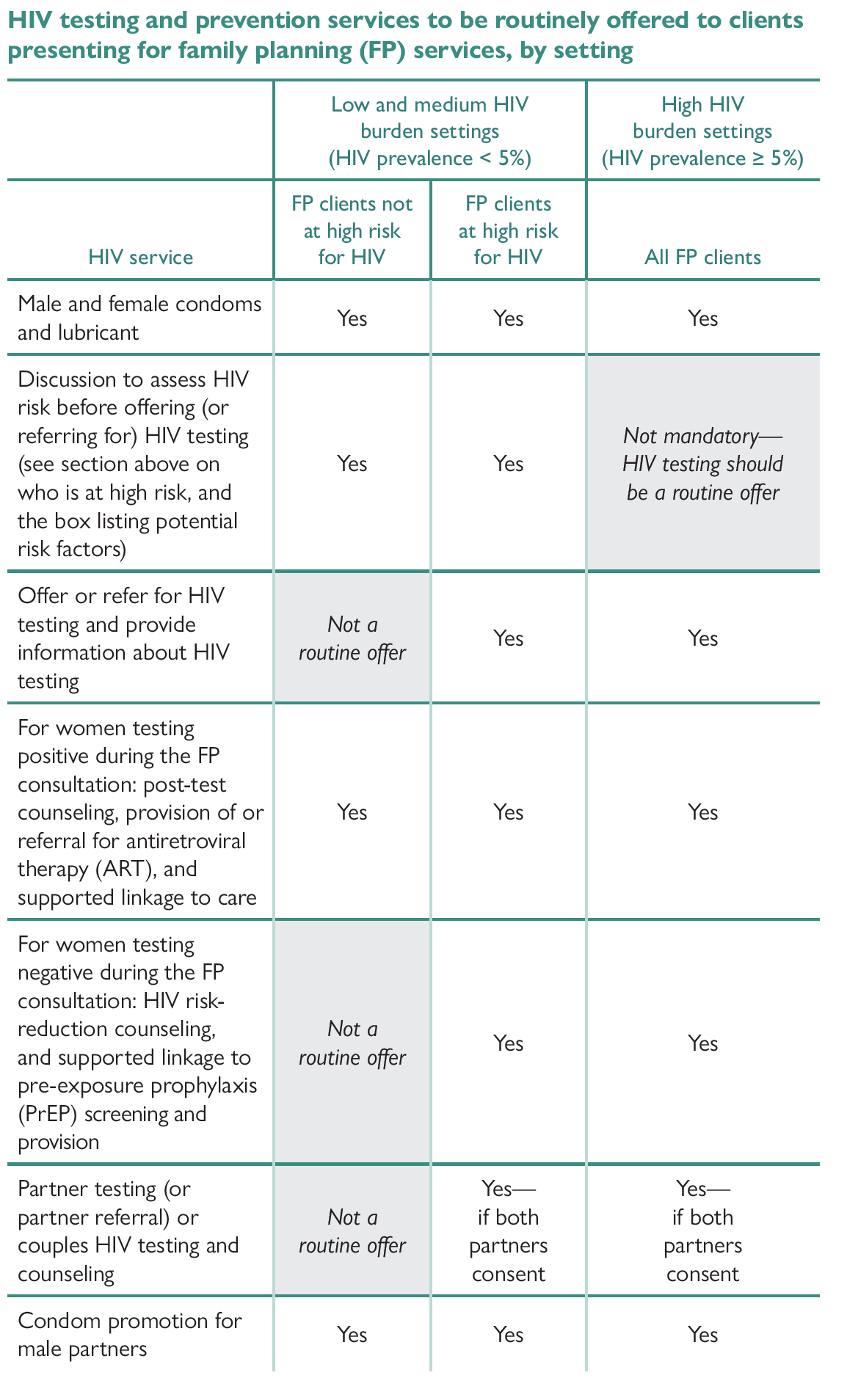Capítulo 23 Descargar Capítulo
Providing HIV Testing and Prevention Services
Providers can break down barriers to accessing HIV testing and prevention interventions by offering these services when adolescents and women present for family planning. In high HIV burden settings, and when providing family planning services to those at high risk for HIV, this means providing:
- Male and female condoms and lubricant Information about HIV testing, and referral for or provision of HIV testing, if available (see the sections Talking about HIV Testing and HIV Testing Options).
- Information about all HIV prevention options and treatment
- For women learning they are HIV-positive during the consultation: Post-test counseling, antiretroviral therapy (ART) or referral for immediate treatment, and supported linkage to care
- For women testing negative during the consultation: HIV risk-reduction counseling, supported linkage to pre-exposure prophylaxis (PrEP) screening and provision (see the section, Preventing HIV Acquisition).
- Partner testing or couples HIV testing and counseling, for women who are accompanied by their partners, and where both partners consent
- Referral for partner testing for women not accompanied by their partners, with the woman’s consent
- Condom promotion for male partners.
The table below outlines the distinction between how HIV testing and prevention services are offered to women living in high HIV burden settings versus in low- and medium-burden settings. In high HIV burden settings, testing and prevention services are offered to all adolescents and women presenting for family planning services, whereas in low- and medium-burden settings, these services are not routinely offered and instead providers offer testing for those at high risk for HIV.
